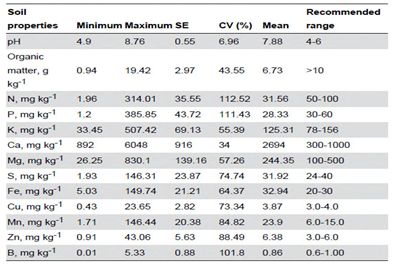Soil Nutrient Assessment Enlightens Urban Ecosystems in Hubei
2014-01-22
With the rapid development of urbanization, many cities start to build ‘green’ cites to beautify the city or to release the burden of greenhouse gases. Recent urban landscape vegetation surveys show many cities suffer from garden plant nutrient deficiencies, especially in newly developed cities of China. Soil nutrients and soil nutrient management in the cities of Hubei province have not received adequate attention to date.
Dr. LI Zhiguo, under the supervision of Prof. CHENG Fang from Wuhan Botanical Garden, characterized the available nutrients of urban soils from nine cities in Hubei province, China, and assessed how soil nutrient status is related to land use type and topography.
Soil nutrients were measured in 405 sites from 1,215 soil samples collected from four land use types (park, institutional [including government building grounds, municipal party grounds, university grounds, and garden city institutes], residential, and roadside verges) and three topographies (mountainous [142–425 m a.s.l ], hilly [66–112 m a.s. l ], and plain [26–30 m a.s. l ]).
Chemical analyses showed that urban soils in Hubei had high pH and lower soil organic matter, available nitrogen (N), available phosphorus (P), and available boron (B) concentrations than natural soils. Nutrient concentrations were significantly different among land use types, with the roadside and residential areas having greater concentrations of calcium (Ca), sulfur (S), copper (Cu), manganese (Mn), and zinc (Zn) that were not deficient against the recommended ranges.Topographic comparisons showed statistically significant effects for 8 of the 11 chemical variables (p < 0.05). Concentrations of N, Ca, Mg, S, Cu, and Mn in plain cities were greater than those in mountainous cities and show a negative correlation with city elevation.
These results provide data on urban soils characteristics in land use types and topography, and deliver significant information for city planners and policy makers.
